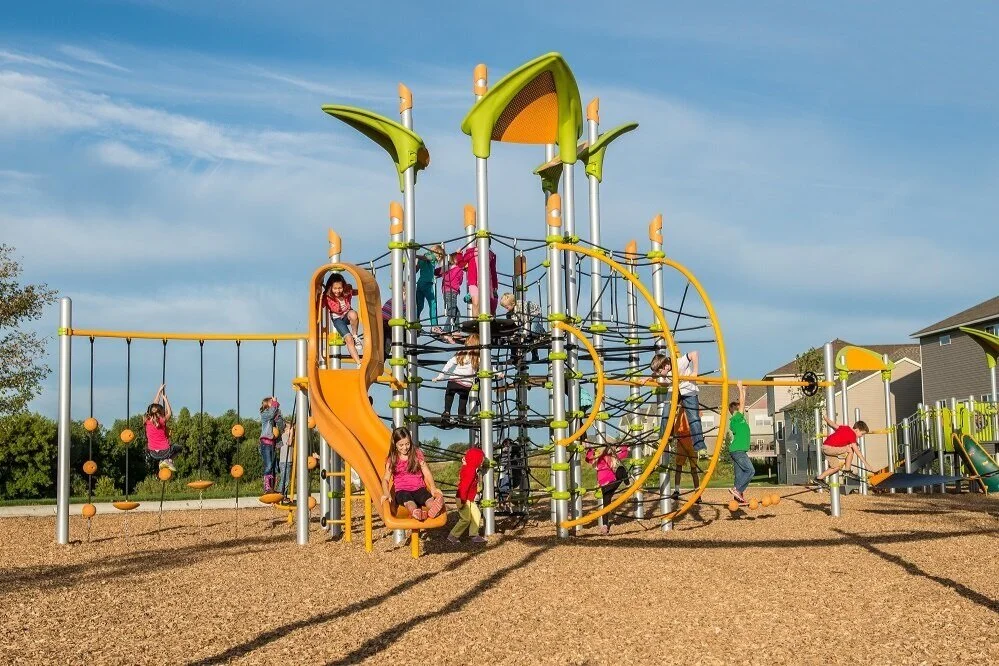Top 10 Ways of Building Sustainable and Eco-Friendly Parks
Parks are about a lot more than making a community more beautiful and liveable. Parks also protect and conserve our natural areas and can promote a healthy ecosystem. If a park is designed more for aesthetics and recreation, they might not be as sustainable or beneficial. There are ways to design parks that factor in those two things, but a top priority should also be their impact on the planet.
By creating an eco-friendly park, you’re doing a lot more than just giving people a nice place to gather. You can also strengthen your environment by giving native flora and fauna a place to thrive. A park with lots of native plants creates a place for wildlife to live and proliferate. To do that, you should limit the amount of construction and paved places that go into the park; this will improve the flow of groundwater and keep the land for the animals. For the top 10 suggestions for building a sustainable park, read on.
image © unsplash
1. Keep the Use of Turf to a Minimum
Areas with a lot of grass aren’t really helpful for wildlife or protection against soil erosion, so keep the grassy areas to a minimum. Huge expanses with just grass should be limited to athletic fields and facilities.
2. Encourage Native Plants
By planting a lot of trees, bushes, and plants that are indigenous to the area, you’ll be promoting a healthy and local ecosystem. It’s really important to try to avoid planting invasive and non-native species, because they will harm the ecosystem and may be difficult to remove down the road.
3. Don’t Build Near Wetlands
It’s important to avoid building projects or paving near wetlands, because it can actually cause irreparable and irreversible damage. As per Jolene Kruller, an eco writer at Psychology Writing Service and Write My Paper, “wetlands are very sensitive and delicate ecosystems that are home to tons of species, so it’s important to build the park in a way that supports and protects wetlands.”
4. Limit the Amount of Paved Surfaces
Paved surfaces, as briefly mentioned earlier, prevent the flow of water and because they are non-porous, they don’t allow rainwater to reach the ground. They also break the wildlife’s habitat in sections. Keep parking lots, roads, and paved trails to an absolute minimum.
5. Pest Management Must Be Integrated
There are different ways to reduce pests than to use harmful pesticides that get into the environment and affect other species. Instead, use natural traps, or introduce sterile males into the environment.
6. Build Sustainably
Any human-made structures like park benches should be build sustainably, using materials like metal. This means they can last longer without breaking down and damaging the environment.
7. Provide Recycling Options
Putting recycling bins next to every trash bin gives people a chance to recycle everything that’s glass, plastic, or paper. Don’t make the labels on the bins too confusing, because people will get impatient and put their trash anywhere.
8. Don’t Remove Topsoil
Journalist Frank Beam, from BoomEssays.com and Big Assignments, explains to city planners and builders that “if possible, keep the topsoil in place when you’re building the park. By doing that, you’re making sure that all the native plants get all the nutrients that they need to thrive.”
9. Use Mulch and Compost to Fertilize
You want to use natural methods to fertilize the plants and trees that you’re planting. Using chemical fertilizers can do much more harm than good to the environment. Natural fertilizers work just as well, so look for the right alternatives.
10. Keep Existing Natural Places
As much as possible, you want to keep natural landscapes intact. It’s easier to make a park healthier and sustainable if you limit the disturbances to the area, and if you’re already starting with a healthy ecosystem. When you’re planning new parks, think about areas where parks already exist and how they can be improved. You should also limit the disturbance of fallen trees and mulch, unless they’re posing a risk to public safety. That’s because undergrowth is very important for the health of the ecosystem.
Author: Journalist Beatrix Potter, with Academic Writing Service and Essay Service, shares her tips and tricks on living healthier, more sustainable lives. She researches more alternative city planning and building methods and runs seminars and lectures on those topics. Bea also works as a freelance editor for the Essay Help Australia service.
image © unsplash







